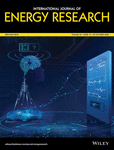Thermo-economic analysis and optimization of a combined Organic Rankine Cycle (ORC) system with LNG cold energy and waste heat recovery of dual-fuel marine engine
Funding information: Chenguang Program, Grant/Award Number: 17CG50; National Natural Science Foundation of China, Grant/Award Number: 51706129; Postdoctoral Science Foundation of China, Grant/Award Number: 2019M650084; Shanghai Science and Technology Commission, Grant/Award Number: 18040501800
Summary
A combined Organic Rankine Cycle (ORC) system with liquefied nature gas (LNG) cold energy and dual-fuel (DF) marine engine waste heat utilization was proposed. Engine exhaust gas and engine jacket cooling water were adopted as parallel heat sources. Thermo-economic analyses of the proposed system with 32 working fluids combinations were performed. Two objective functions covering thermal efficiencies and economic index were employed for performance evaluation. Afterward, the effects of operation pressure on the objective functions were investigated. Finally, the optimal conditions were obtained from the Pareto front with the Non-dominated Sorting Genetic Algorithm-II (NSGA-II) method. The results show that the proposed ORC system has better energy recovery performances than the parallel ORC system. R1150-R600a-R290, R1150-R601a-R600a, and R170-R601-R290 are determined as the three most promising working fluids combinations. Under optimized conditions, the output power range is 199.97 to 218.51 kW, the energy efficiency range is 13.64% to 15.62%, and the exergy efficiency range is 25.29% to 27.3%. The payback period ranges from 8.36 to 8.74 years. The working fluids selection helps to reduce the exergy destruction of intermediate heat exchanger, which could be up to 30.59%.




